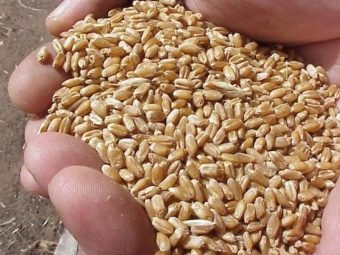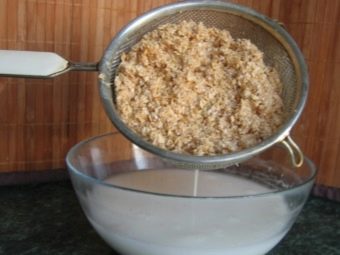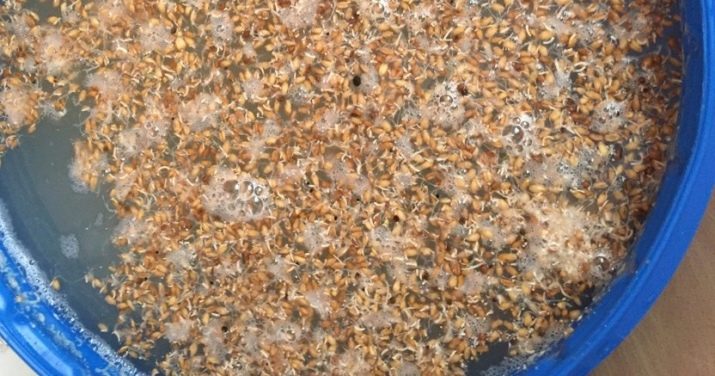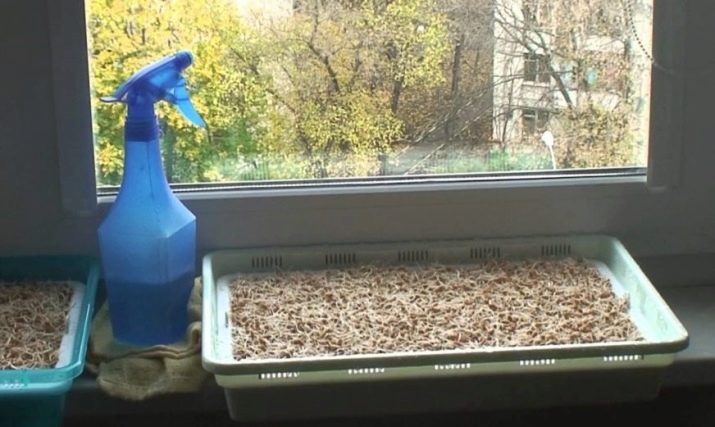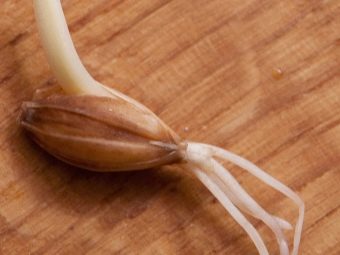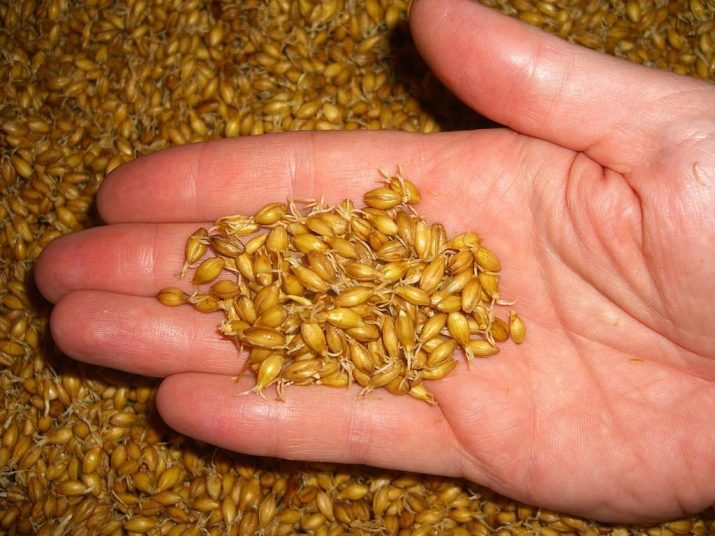What is barley malt and how to cook it?
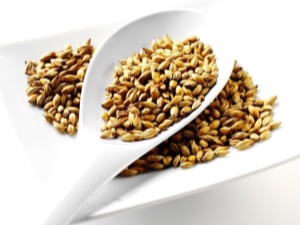
Beer is a favorite drink of millions of people.Many prepare it with their own hands, so as not to encounter low-quality store products. But this work is impossible without good malt. It can also be made independently at home.
What it is?
Talking about barley malt is appropriate to begin with a description of its role in home brewing. Alcohol, which is part of any alcoholic beverage, is produced by yeast. But simply adding them to cereal grains is not enough. So you can do only paste. By digesting the starch into substances that are simpler in molecular structure, the yeast can be made to produce exactly alcohol. And the simplest way of such splitting, available in every home, is just getting the malt.
You can cook it by germinating barley grains. This process in the brewing industry may also be called “saccharification” or “malting.” The essence of the name change does not change: there are special enzymes that convert starch into simpler components.
Malt concentrate can be used not only for making beer. With it, they prepare whiskey, kvass and a number of other drinks. And also it can be used as a natural sweetener, adding to tea, desserts and pastries. The benefits of such a product in private brewing are associated with reduced time and cost. Malt extract is obtained in a rather complicated way: the malt itself has to be mashed. However, no primary product and no processing will give a positive result if the raw materials are not properly selected.
How to choose a grain for germination?
Barley fresh crop just does not come in handy: it grows very poorly. The ideal raw material is that collected at least 2 months and not more than 12 months ago. Good barley grain must ripen, become heavy, acquire a light yellow color. The inside of a quality barley is always white, loose, the grain drowns quickly when submerged in water. Another requirement is a solid screening.
In the grain mass should not be the slightest sign of weeds.
Another important point is a thorough check of the germination of grains. One hundred large grains spread in a glass and pour water. Those grains that float up are removed, replacing them with full-weight specimens. When only dense barley is selected, it is removed, laid out on a saucer, covered with moist matter. The grain is transferred to a dark place. If the fabric dries out within the next 2 or 3 days, it is additionally moistened. At the end of the test period, the% of seeds that did not sprout were counted.
Malt must be germinated by 90–92% or more. If this condition is not met, the fermentation will be extremely difficult.
Cleaning and soaking
A simple assessment of germination can not be limited. Sifting grain, pour it into any suitable container. Water is poured in there, again removing everything that comes up, as well as foreign matter and debris. Then the grains are washed twice, and more if necessary, until the drained water becomes clear. Now you need to soak the barley for 6 or 8 hours, so that the water covers the grain by 3-4 cm. Important: it is unacceptable to exceed the processing time. This technique allows you to reduce the time spent.
If, however, instead of the “pouring method”, we choose the traditional approach, we will have to soak the grain longer, since it is required to increase the moisture content of barley to 40%. Soaking allows you to easily separate the shell from the main part of the grains and eliminates the destruction of the seed during bending. In summer, the water is changed every 6 hours. In winter they do it twice as rarely. The total duration of soaking exceeds 24 hours. After washing, the barley must be disinfected. Work as follows:
- additionally washed barley:
- fill it with weak solutions of iodine or potassium permanganate;
- after 15 minutes, pour the solution;
- washed grain again;
- proceed to germination.
If disinfection is ignored, the probability of infection of malt with putrefactive microorganisms increases significantly. The fact is that conditions favorable for fermentation at the same time contribute to the development of dangerous microbes. The water used for disinfection and rinsing is completely poured. The slightest moisture surface of the grains is not allowed. If, after breaking a barley seed, you can see a white liquid - it means that soaking was too long, you will not get a quality product.
How to sprout malt?
Growing malt at home can be done by two very different methods. Beginners need to germinate barley without watering - this technique is easier. In this case, the soaking of the grain will take a long time, at least 1 day. When the raw material is washed and disinfected, it must be given a "breathe". Wet barley is laid out in boxes in such a way that there is a layer of 5 cm everywhere.
There he must lie 6 or 8 hours. During this time it is necessary to mix the grains 2 or 3 times. They are lifted above the surface of the box, ensuring the purging and cleaning of carbon dioxide. When the "ventilation" is over, the grains are poured into boxes or basins, making the layer already 10 cm. It is important to make the layer even. Capacity should be covered with a damp cloth.
When germinating malt with your own hands, you should keep the room temperature strictly at 17 or 18 degrees. If the air is colder, the development of the grains will be inhibited. With stronger heat, one must beware of rotting and mold infection. The next stage is continuous airing and active moistening of the grains. Barley should have a moisture content of 40%.
Visually dry grain is sprayed with water, using 50–70 g of water for every 5 kg at one time. Tedding and spraying is carried out every 6–8 hours.
It is recommended to use perforated boxes. If there is no perforation, water may collect at the bottom. In this case, it is necessary to remove it from there, and to dry the grains in addition.
During the first 5 days of germination, barley should be aired regularly. But further flow of air is required to limit. This reduces starch loss. Sometimes they write that home brewers may not follow such a rule. However, it would be better to reproduce carefully the practice developed in industrial brewing.
When the grain is tedded, you can not be afraid of the destruction of the roots or sprouts. Biochemical transformations in the grains will invariably continue, and the production of enzymes will continue. When 2-3 days have passed, the barley will begin to increase in size, and the temperature inside the seeds will rise. At this point, we must do everything possible so that the grain is not moistened excessively.
The barley mass is most actively tedded, it is desirable to even reduce the interlayer to 5 cm.
Malt is recognized as ready, the sprouts of which are equal in length to the grains themselves or surpass them. Important: do not confuse sprouts and roots. Such an error can lead to irreparable consequences. The processes are shorter than the roots, but thicker. There are several more criteria for readiness:
- the sweetness of the grains and the absence of flour flavor;
- crunching when biting;
- smell like a cucumber;
- interlacing of the roots, almost not allowing to take the grain separately from each other.
The “pouring” method is somewhat more complicated. It necessarily requires perforated containers, and the holes should be as small as possible. Watering is carried out at least 1 time in 12 hours (ideally - 1 time in 6 hours). It is not recommended to save liquid: using an improvised shower, water is poured for about a minute. The exact time is determined individually each time, gaining experience.
By varying the temperature of the water, it is possible to influence the germination rate. Increase it using a warm liquid, and a cold shower, on the contrary, inhibits development. It is recommended to turn the boxes twice a day. To simplify work, they are pre-equipped with sieves on both sides. To evaluate whether the malt is finally ready, it should be done according to the same rules as with classical technology.
Drying
When malt is germinated, it will certainly be disinfected. This is necessary even if the initial disinfection was carried out according to all the rules. Grains are again treated with weak solutions of iodine or potassium permanganate. Soak the malt need from 30 to 60 minutes. Important: by increasing the concentration of potassium permanganate, you can reduce the processing to 20 or even 15 minutes.
Some washed with green malt diluted to 1% sulfuric acid. But use it carefully. Important: Barley malt should be used as soon as possible. All kinds of microbes and fungi develop very easily in it. Even if these organisms themselves are not dangerous, they will absorb nutrients and suppress the normal development of the yeast.
If you can not immediately apply the malt, the right thing is to dry it. In this case, the product becomes light, and you can store it in dry glass jars for more than a year. It is unacceptable to heat the grain to more than 40 degrees when drying. Behind this mark, valuable enzymes, for the sake of which malt is produced, are rapidly destroyed.
At home, barley is dried on warm floors in well-ventilated areas. and you can also use a special drying cabinet. Sometimes malt is placed in unoccupied rooms, where it is dried with wind heaters. The moisture content of the grains after drying is from 3 to 3.5%.
Storage
Preparing to pack up dried malt, they carefully clean it from all remaining roots and sprouts. If there is no desire to fray the grains by hand, they are poured into a bag that is rolled so that the shoots disappear themselves. Then the malt is sieved. On the street do it in windy weather. Indoors sift the grain is necessary in front of the fan. Store the sifted product in a closed container in a dry place. You can leave it for a long time. Barley malt can be used to get beer from any raw material containing starch.
See below for how to make barley malt.






